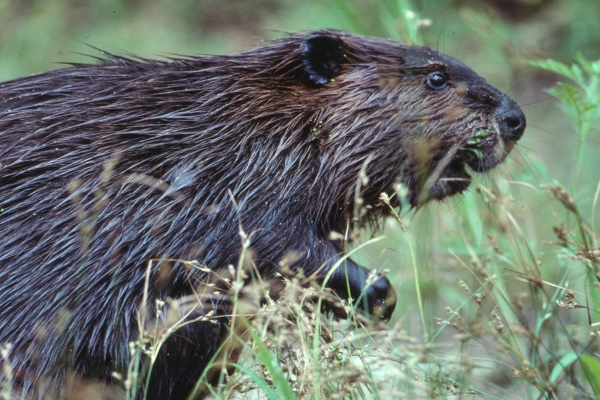Giant Species Of Beavers Used To Roam North America Thousands Of Years Ago

The territory that is now North America was once the homeland of beavers as big as black bears, that used to inhabit the lakes and wetlands. Lucky for us, the oversized rodents went extinct during the last Ice Age.
Recently, scientists discovered fossilized remains of giant beavers on several different sites, scattered all around North America, from Florida to Alaska. Even though giant beavers, that could reach 100 kilograms, seem similar in appearance to normal-sized beavers, they are actually quite different.
First of all, the oversized species of beavers had a very different tail. Instead of the paddle-shaped tail, modern beavers are known for, the ancient species had a long skinny tail similar to muskrats. Secondly, their denture was not the same as modern beavers. While today’s beavers have sharp chiseled front teeth, their giant predecessor’s incisors were larger and curved, lacking a sharp edge.
Giant Species Of Beavers Used To Roam North America Thousands Of Years Ago
10,000 years ago, the species found its doom, like many other animal species that disappeared during the Ice Age, like the woolly mammoth. What is interesting about the extinction of the giant beavers is that scientists can’t figure out what caused it. To begin to formulate an explanation, we need to know how the species lived, so we can figure out what environmental conditions could have threatened it.
During other studies, researchers found that the giant beaver needed a warm and wet climate to live. What we don’t know is if the giant rodent had a similar diet to its modern version. The most recent study decided to approach the mystery in a way never tried before. The team of researchers decided to study the fossilized bones of the species since its diet can be determined based on the stable isotopes that are incorporated into body tissues.
While analyzing the remains, scientists discovered that the giant beaver’s diet consisted mainly of woody plants, specifically aquatic ones. Since the climate became more dry and warm towards the end of the Ice Age, wetlands habitats dried out, so it makes sense that giant beavers became extinct. These discoveries are all part of the ongoing search for information that could explain why so many species of animals became extinct during the Ice Age.
0 comments